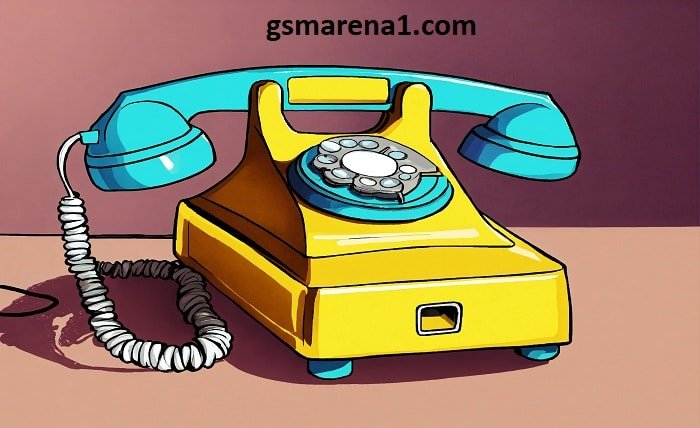The year 2001 was a transformative period in the evolution of mobile technology. Phones in 2001 were transitioning from simple communication devices to gadgets that offered more advanced features, like basic internet access and texting. While today’s smartphones are capable of countless tasks, phones in 2001 laid the groundwork for the modern mobile phone industry. At this time, companies like Nokia, Motorola, and Ericsson were at the forefront of innovation, offering mobile phones that were smaller, more powerful, and more accessible than ever before. This blog post takes a closer look at the mobile phone landscape of 2001 and its influence on today’s devices.
The Mobile Phone Industry in 2001
In 2001, the mobile phone industry was booming, with manufacturers competing to create the most advanced and stylish devices. Phones in 2001 were much simpler than the smartphones we use today, but they were revolutionary at the time. Nokia dominated the market with its reliable and user-friendly devices, while brands like Motorola and Ericsson introduced sleek new designs. Phones in 2001 were primarily used for calls and texts, but manufacturers were beginning to experiment with features like color screens and mobile internet access, setting the stage for the smartphone era.
Iconic Phones Released in 2001
Several iconic models defined the landscape of phones in 2001. Perhaps the most famous was the Nokia 3310, a durable and dependable phone that became a global bestseller. Known for its long battery life and the beloved Snake game, the Nokia 3310 is a classic symbol of phones in 2001. Another noteworthy device was the Motorola V60, a stylish flip phone that introduced a sleek design and compact form factor. Meanwhile, the Sony Ericsson T68 was one of the first phones with a color screen, marking a major milestone in mobile technology. These devices highlight how phones in 2001 began to introduce innovative features while maintaining simplicity.
Popular Features of Phones in 2001
Phones in 2001 were built with functionality and durability in mind. While they lacked the touchscreens and apps of today’s smartphones, they introduced several features that were cutting-edge at the time. Text messaging (SMS) became increasingly popular, allowing users to send short messages to friends and family. Polyphonic ringtones and customizable wallpapers were also new and exciting features that allowed users to personalize their devices. The ability to access the internet, albeit in a very basic form, was another emerging feature in phones in 2001, laying the groundwork for mobile browsing that would become standard in later years.
The Design of Phones in 2001
The design of phones in 2001 was characterized by compact, portable devices with physical keypads and small, monochrome screens. The flip phone design, made famous by models like the Motorola V60, was particularly popular. Flip phones offered a sleek, futuristic look and protected the keypad when not in use. Meanwhile, bar phones like the Nokia 3310 had a more traditional form factor but were loved for their durability and simplicity. In 2001, manufacturers focused on making phones smaller, more stylish, and more comfortable to hold and carry. These design principles influenced the development of mobile phones in the following years.
Text Messaging Takes Off in 2001
While text messaging had been introduced in the late 1990s, it was in 2001 that SMS truly took off. Phones in 2001 featured user-friendly keypads that made texting more accessible. The Nokia 3310, in particular, was popular for its easy-to-use texting interface. Phones in 2001 enabled users to send short, 160-character messages to their contacts, transforming the way people communicated. Text messaging quickly became a favorite method of communication, and by the end of 2001, SMS was a major driver of mobile phone adoption worldwide. The rise of text messaging during this period was a key development in the history of mobile phones.
Early Mobile Internet on Phones in 2001
Though mobile internet was still in its infancy, phones in 2001 introduced the concept of WAP (Wireless Application Protocol), which allowed limited web browsing. Devices like the Sony Ericsson T68 offered users access to basic internet services such as news, weather updates, and email. While the mobile web experience was slow and limited to text-based content, it marked the beginning of internet access on the go. The introduction of WAP on phones in 2001 paved the way for more advanced mobile browsing and the eventual development of full-fledged smartphones that could handle complex web applications.
Battery Life and Durability of Phones in 2001
One of the most appreciated features of phones in 2001 was their long battery life and durability. Unlike today’s smartphones, which often require daily charging, phones like the Nokia 3310 could last for days or even weeks on a single charge. This was partly due to the simpler technology and smaller screens of phones in 2001, which consumed less power. Additionally, these phones were known for their robustness; they could withstand drops and rough handling, making them perfect for everyday use. This combination of durability and battery efficiency contributed to the lasting appeal of phones in 2001.
The Influence of Phones in 2001 on Modern Smartphones
The technology and design choices of phones in 2001 had a lasting impact on the development of modern smartphones. Many of the basic functions that we now take for granted, such as texting, mobile internet, and customizable ringtones, originated from the innovations of phones in 2001. While modern smartphones are far more advanced, the focus on user-friendly interfaces, portability, and personalization that emerged in 2001 remains a cornerstone of mobile phone design. In many ways, phones in 2001 laid the foundation for the touchscreen devices and app-driven platforms that dominate today’s mobile technology landscape.
Future Nostalgia: Why Phones in 2001 Are Still Remembered Today
Even two decades later, phones in 2001 hold a special place in the hearts of many users. The simplicity, reliability, and nostalgic charm of devices like the Nokia 3310 have made them iconic symbols of early 21st-century technology. Several classic models from phones in 2001 have been re-released with updated features, catering to those who long for the durability and long battery life of early mobile phones. The enduring appeal of phones in 2001 serves as a reminder of a time when technology was just beginning to transform communication, offering a glimpse into the early days of mobile innovation.
Conclusion
Phones in 2001 marked a significant chapter in the evolution of mobile technology. These devices introduced key innovations like text messaging, mobile internet, and customizable features that would shape the future of communication. With iconic models like the Nokia 3310 and Motorola V60, phones in 2001 combined functionality with durability, creating devices that are still remembered fondly today. As the mobile phone industry continues to advance, the legacy of phones in 2001 lives on, influencing the design and features of the smartphones we use today. Understanding the impact of phones in 2001 provides valuable insight into the rapid evolution of mobile technology over the past two decades.
FAQ
1. What were the most popular phones in 2001?
In 2001, iconic models like the Nokia 3310, Motorola V60, and Sony Ericsson T68 were some of the most popular phones. These devices were known for their durability, compact designs, and user-friendly interfaces.
2. Did phones in 2001 have internet access?
Yes, some phones in 2001 offered limited internet access through WAP (Wireless Application Protocol). Although the browsing experience was basic and text-based, it was the beginning of mobile internet.
3. What features made phones in 2001 stand out?
Phones in 2001 introduced features like text messaging (SMS), polyphonic ringtones, customizable wallpapers, and basic mobile internet access, making them revolutionary at the time.
4. Why were Nokia phones so popular in 2001?
Nokia phones, particularly the Nokia 3310, were popular in 2001 due to their long battery life, durability, and user-friendly interface. The inclusion of games like Snake also contributed to their widespread appeal.
5. How did phones in 2001 influence modern smartphones?
Phones in 2001 laid the foundation for many features found in modern smartphones, including text messaging, mobile internet, and customization options. The focus on portability, design, and functionality during this time continues to influence smartphone development today.



